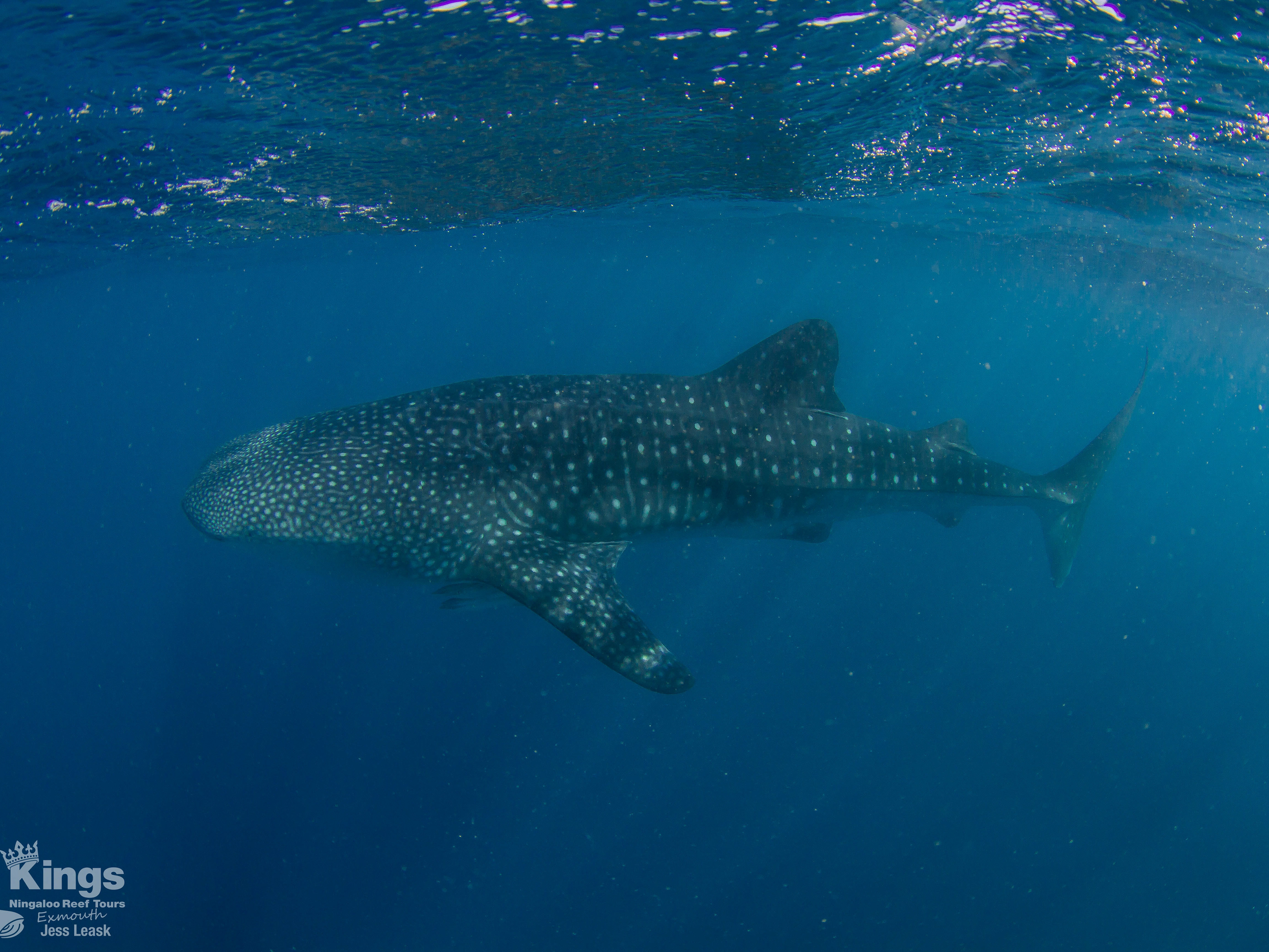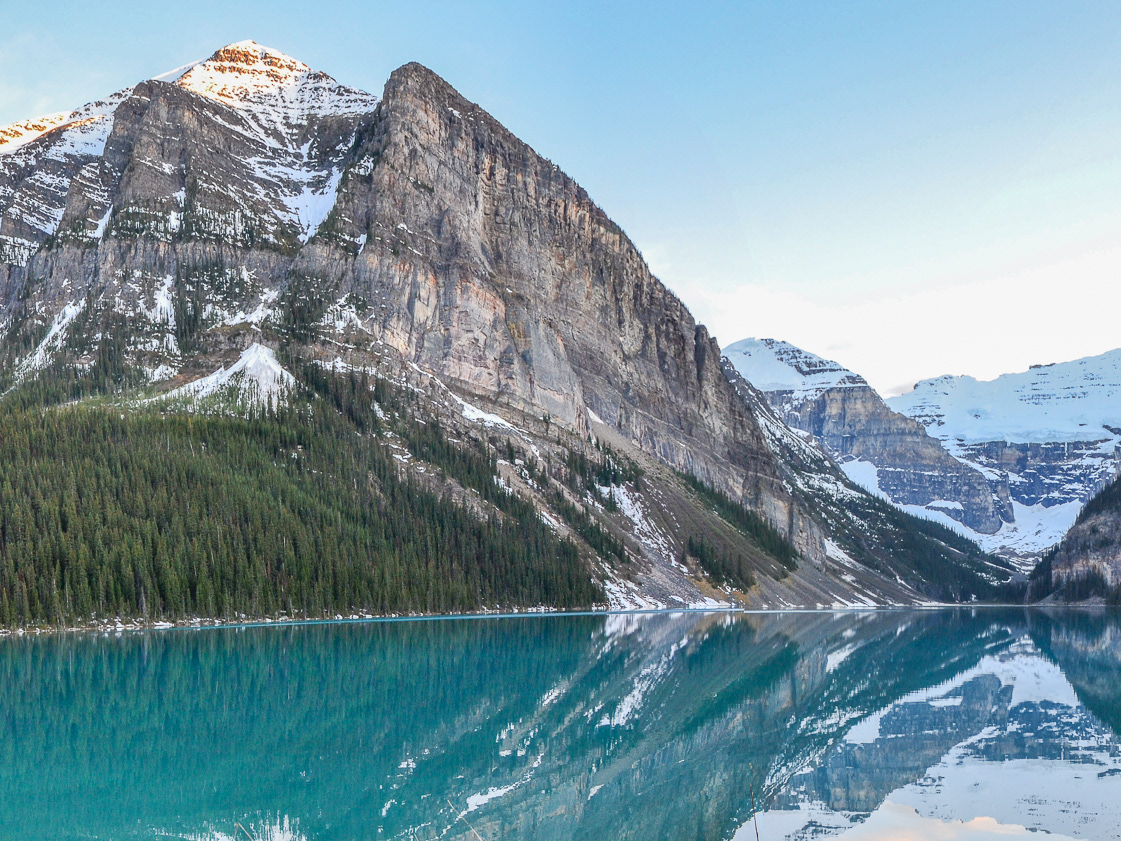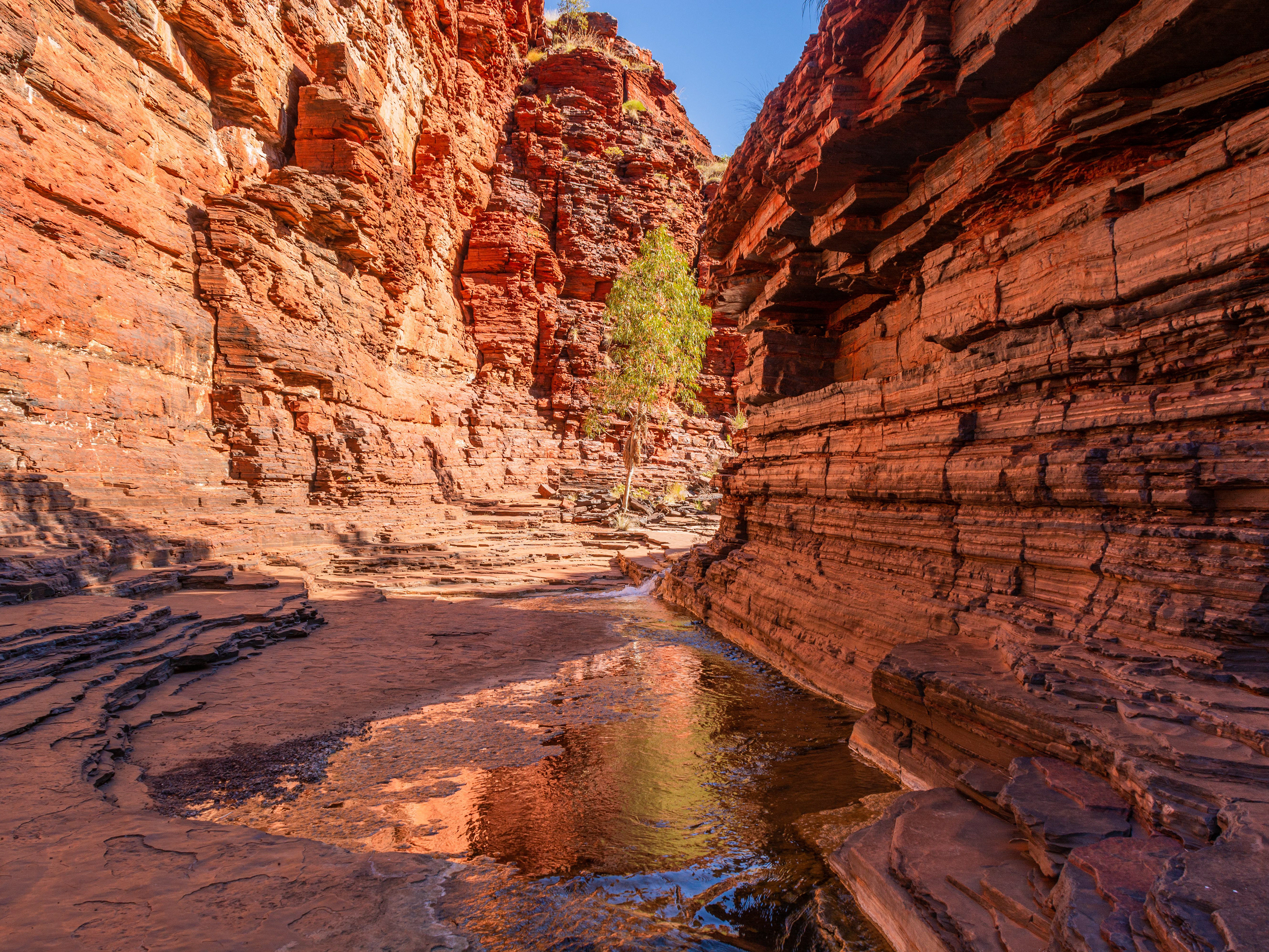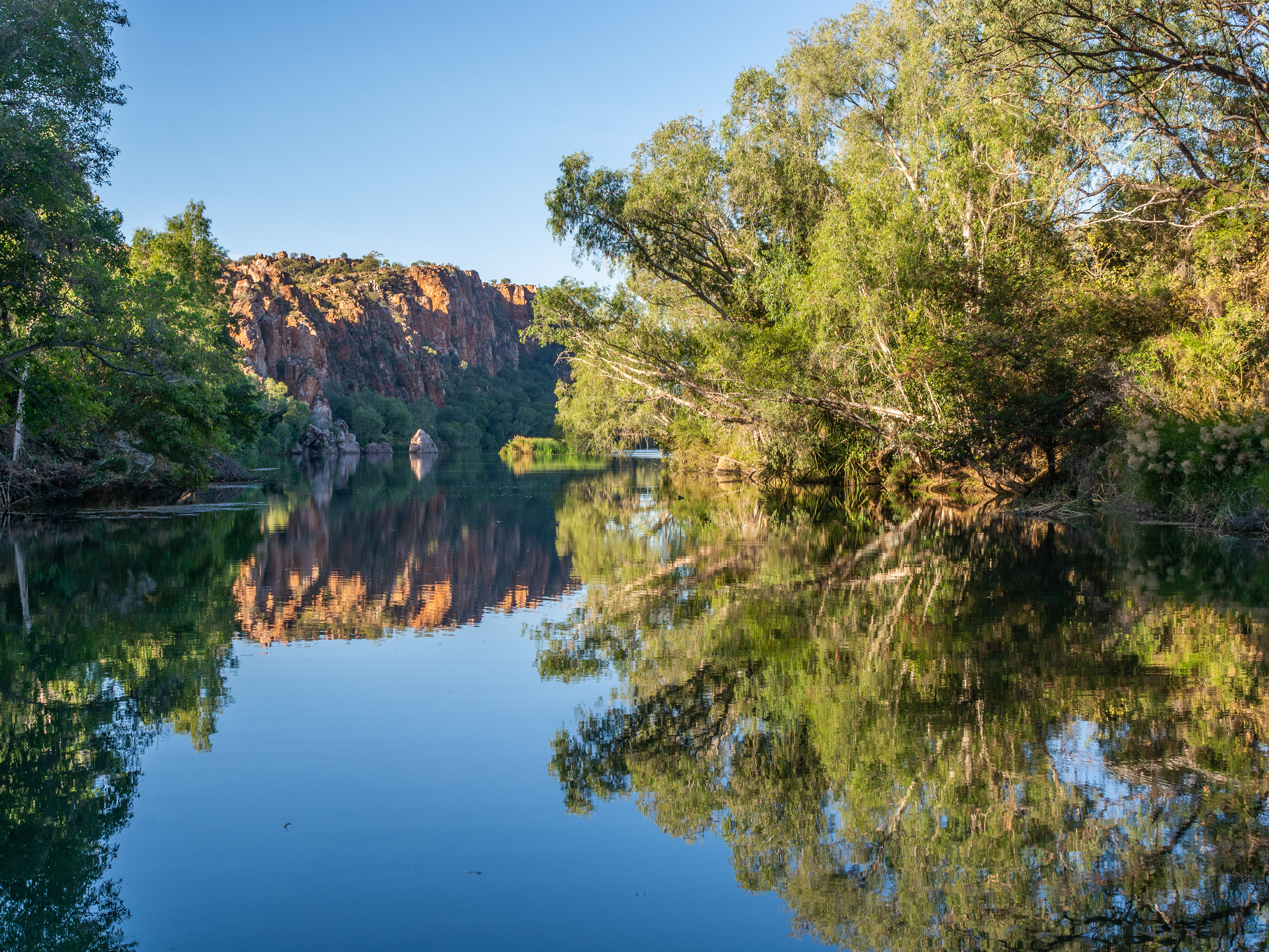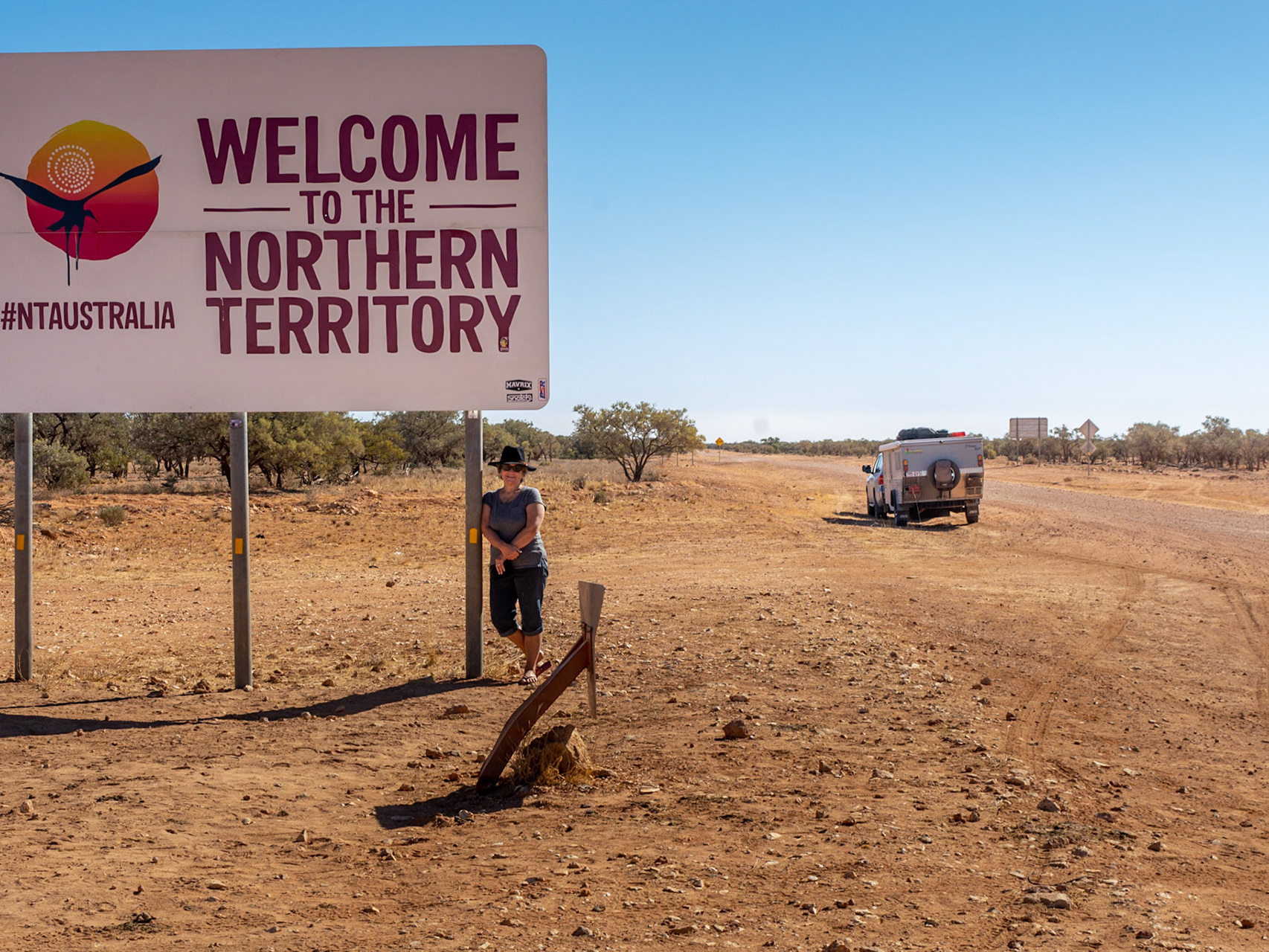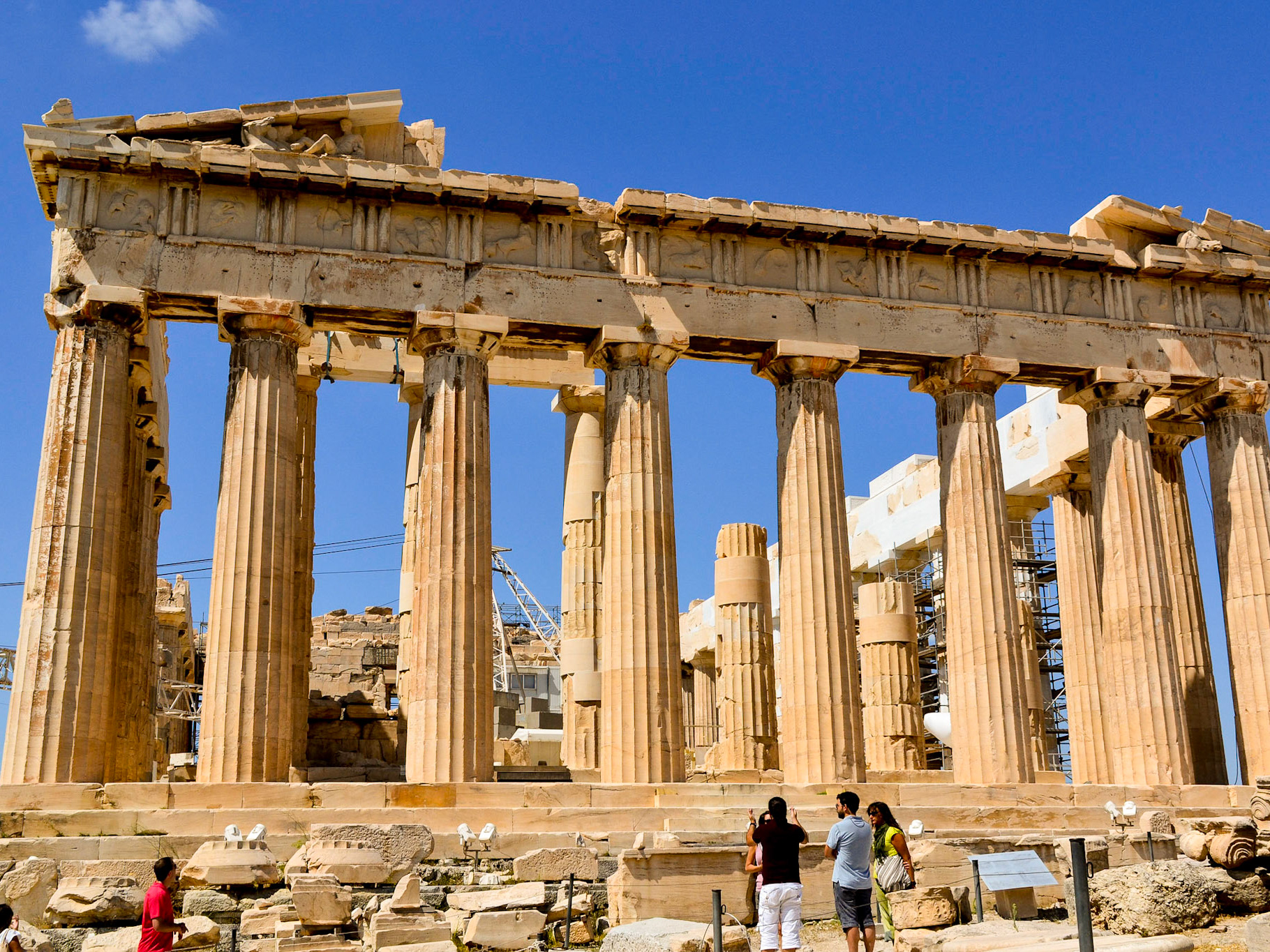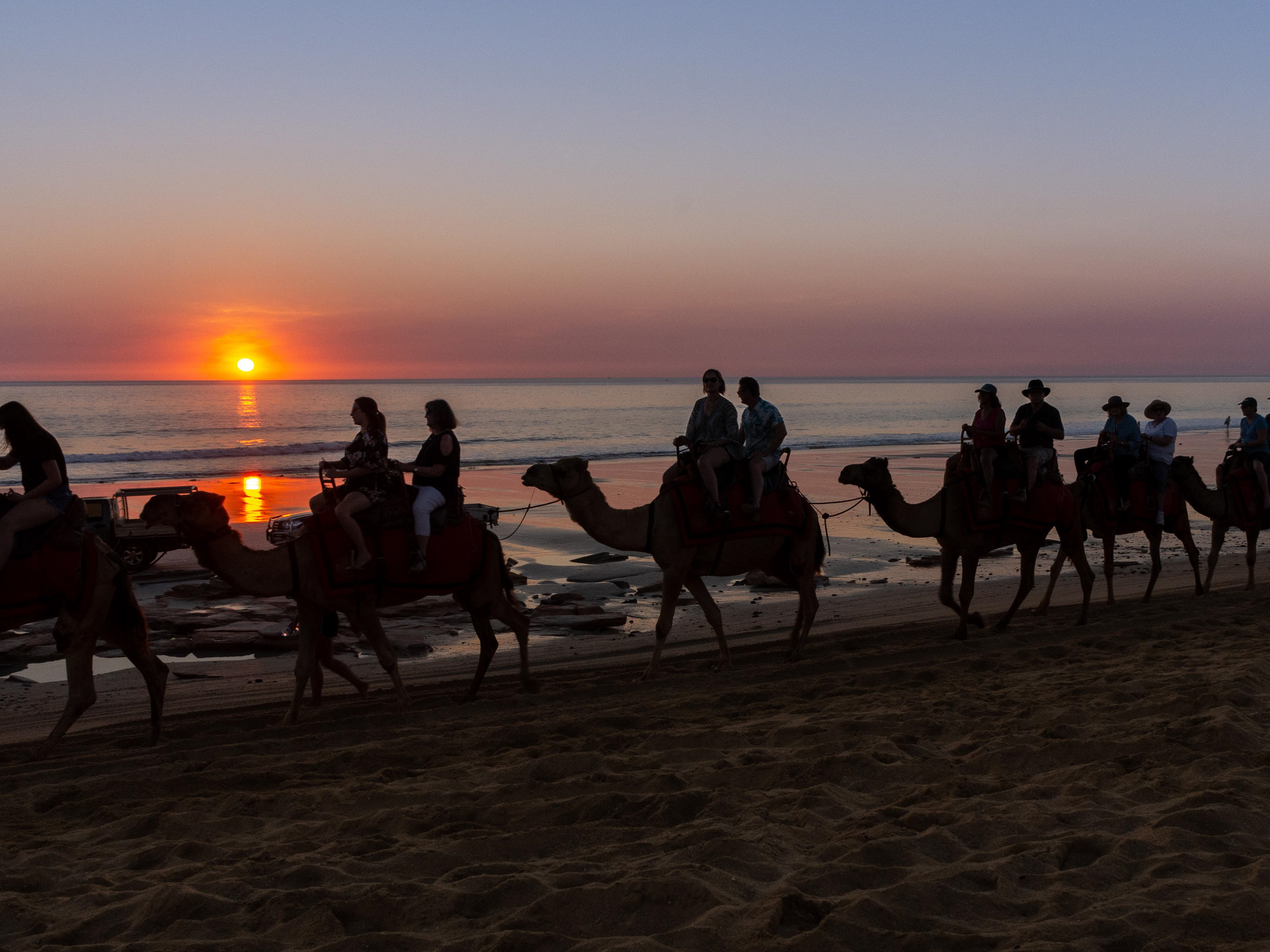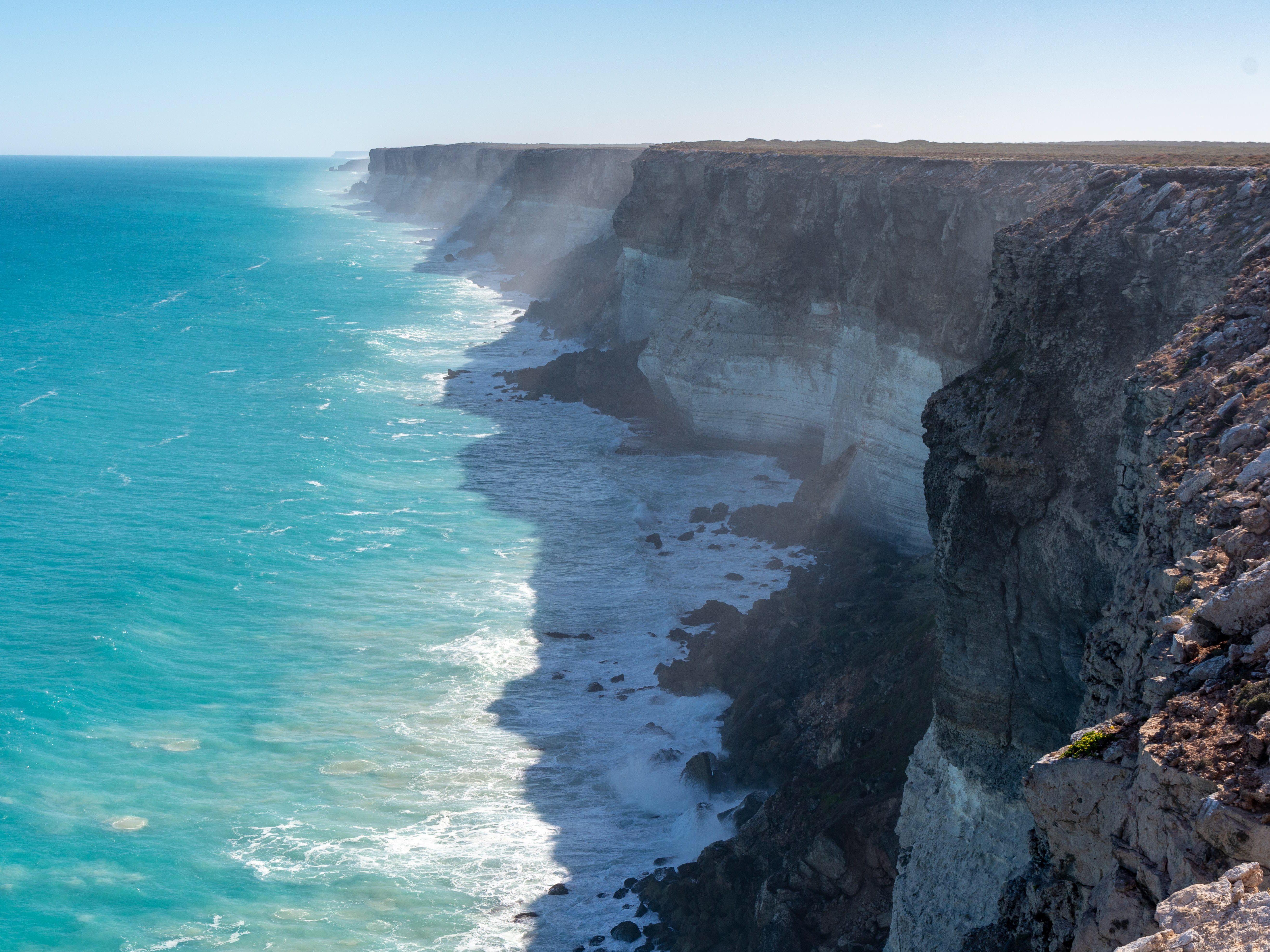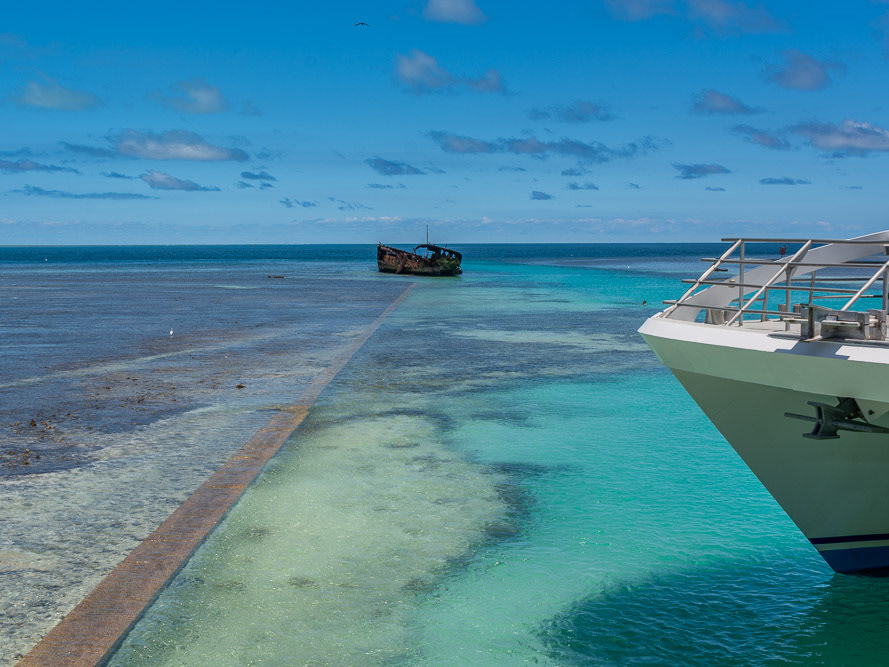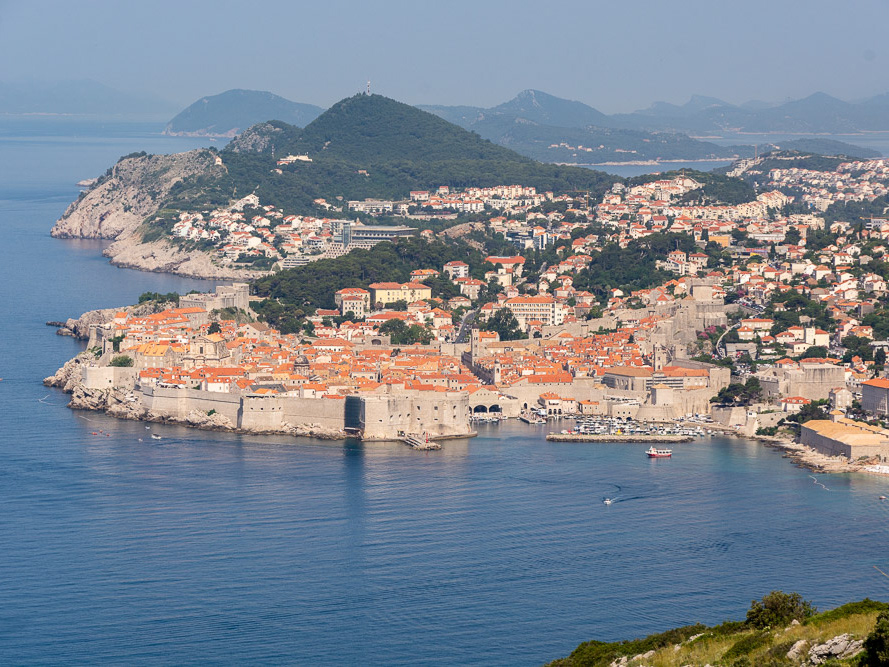Gallopili

Looking over Suvla Bay from Battleship Hill.

Ari Burnu Cemetery

Ari Burnu Cemetry - 253 commonwealth serviceman are buried and commemorated here.

253 commonwealth serviceman are buried and commemorated at Ari Burnu.


The beach at Ari Burnu looking towards Anzac Cove where Austrailain and NZ troops landed in 1915.

Anzac Cove memorial wall.

Anzac Cove memorial wall with the "sphinx" in the background.

The "Spinx" rock above Anzac Cove.

Looking south from Lone Pine towards Cape Helles.

The Lone Pine and the memorial wall listing the names of the fallen.

Lone Pine memorial commemorates 4934 Australian and New Zealander soldiers who died in the Anzac area.
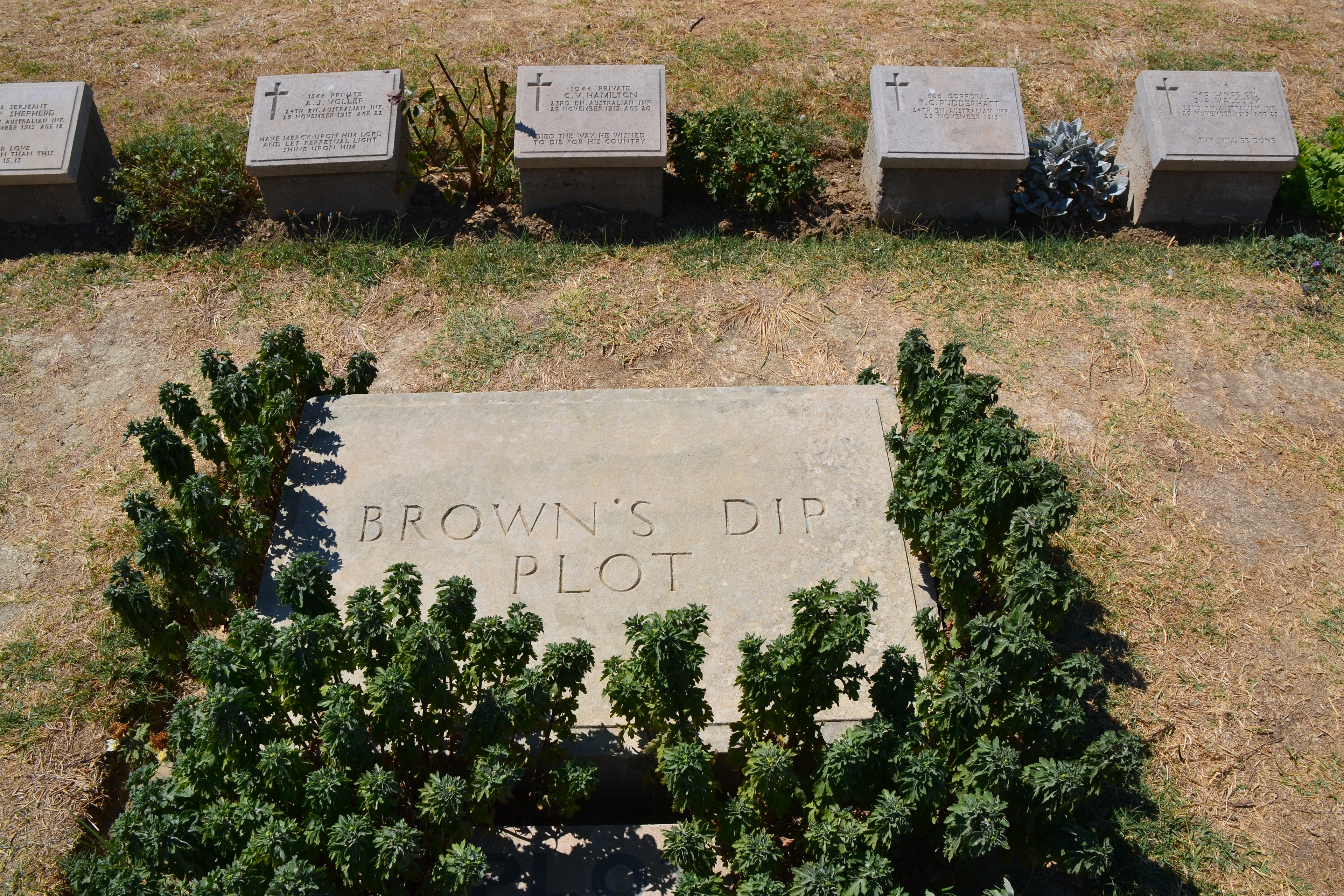

At the end of the heavy fighting, the only successful attack, 6500 Anzacs had been killed. Turks call here as Bloody Ridge. Lone Pine cemetery has 1167 burials.

Monument honouring the NZ Expeditionary Force adjacent Ataturk monument.

Larger than life statue of Mustafa Kemal (Ataturk).

A moving tribute to heros who fought against each other.

This inscription written by Ataturk reflects on the cost of war.
The Ruins of Troy and Pergumum

A commanding view of the plain of Ilium from the top of the acropolis.

Ruins near the southern gate of the ancient settlement of Troy.

Remains of the Roman Odeion, a venue for musical performances.

Remnants of community living.

Built to last a millenia, stone walls and paved ramp probably date back to 1300 BC.

Remnants of a well built 2.5 thousand years ago.

Layers of occupation through antiquity explained.

Archeological excavations continue.

Stone carving.

The walls of Troy. The complex would have been surmounted and augmented by mud-brick structures.

Pieces of the puzzle - segments of huge columns lie around the archeological site.

Remnants of an eloborately carved capital.

A modern day trojan horse for the tourists.

Ruins of the healing temple, sacred to the god Asclepius, the Greek god of medicine.

Looking towards the Roman Theatre from the ruins of the healing temple of Asclepius. In the middle ground are the remnant columns of the once covered walkway.

Sanctuary of Asclepeion - Serpent carvings on ancient columns a symbol for medicine which survives today.

Sanctuary of Asclepeion - Serpent carvings on ancient columns a symbol for medicine which survives today.

Arched entry to the tunnels and underground rooms at the Sanctuary of Asclepeion.

Stairs leading up to the Sanctuary of Asclepeion from the tunnels.

Sanctuary of Asclepeion - natural lighting of the underground tunnels.

The underground tunnels in the Sanctuary of Asclepeion.

Looking over the Roman Theatre and ruins of the extensive healing temple site of the Sanctuary of Asclepieion.

Roman Theatre seating is accessed by narrow sets of stairs.

Looking over the Roman Theatre and ruins of the extensive healing temple site of the Sanctuary of Asclepieion.

Massive columns are all that remain of the once covered walkway leading to the Roman Theatre.

Keyed bases to columns allow for precision levelling. Sanctuary of Asclepeion.

View of the Acropolis of Pergamum from the Sanctuary of Asclepion. The ruins of the Temple of Trajan an Theatre of Pergamom are prominent on the slopes.
Ephesus

Ancient clay pipes stacked in front of the East Bath-Gymnasium complex.

The East Bath-Gymnasium and Amphitheater complex at the State Agora.

Tourists flock in their thousands down the ancient roman road, Curetes Street. This is the same marble road once walked by Mark Anthony and Cleopatra. Curetes Street is one of the three main streets of Ephesus and it connects the Gate of Hercules with the Ephesus Library of Celsus.

The restored facade of the Library of Celsus at Ephesus.

Serpent carvings - an ancient symbol of medicine.

One of the many detailed column along Curetes Street in Epesus.

The goddess Nike carved into marble.

The ruins of the Temple of Hadr.ian

Temple of Hadrian - fine detail of carved lintels.

Friezes on display here at the Temple of Hadrian are reproductions, the originals are in the Ephesus museum, Selcuk.

Roman style communal ablutions complete with underground sewerage.

The impressive facade of the Library of Celsus. The library was comissioned in 110 AD and is the only remaining example of a library from the Roman Empire.

The Gate of Augustus in Ephesus was built to honor the Emperor Augustus and his family.

Statue of Sophia (wisdom) beside the main entrance to the Library of Celsus.

Entry doorways into the Library of Celsus. The Library was the third-largest library in the Roman world behind only Alexandria and Pergamum, believed to have held around twelve thousand scrolls.

Library of Celsus - Latin or Greek text adorns the fascia.

Library of Celsus - elaborate carvings of the raised porticoes..


The road from the front of the theater to Ephesus Antique Port was known as Arkadian Harbor Street (Arkadiane Liman Caddesi).

Ephesus - The Great Theatre, designed in the Hellenistic period to have a capacity of approximately 24,000 people. It was rebuilt by Emperor Cladius during the Roman Empire.

View from the upper levels of the amphitheater

The immense size of the amphitheatre (capable of holding 24,000 spectators) becomes evident from a distance.

The famous hot springs and enormous white terraces of travertine which give it's name.

The shimmering, snow-white limestone, shaped over millennia by calcium-rich springs.

The milky pools of Pamukkale.

Terraces formed down the vast mountainside as mineral-rich waters foam, collect and spill over cascades of stalactites into milky pools below.

Tourists flock to experience the restorative powers of the mineral-rich waters of Pamukkale.

Ruins of the ancient Greco-Roman city of Hierapolis was built on top of the white "castle".

Nearby ruins of the Roman Ampitheatre of Herapolis.
Konya and Sultan Han

Selimiye Mosque a 16th Century mosque in Konya.

The Whirling Durvishes are a renown symbol of the Konya area.

Sultan Han located between Konya and Aksaray on the ancient Silk Road, Seljuk Turkish Sultan Alaettin Keykubad I built this caravanserai, or caravan way-station between 1229 and 1236.

Entry into the Caravanserai, a roadside inn where travelers (caravaners) could rest and recover from the day's journey. Typically along the Silk Road.

Sandstone blocks of huge proportion form a protective perimeter wall of Sultan Han Caravanserai.

Square stone kiosk-mosque of Sultan Han.

The light at the end of the tunnel. The massive central arched doorway and corridors allowed fully laden camel trains into the interior of the caravanserai.

Natural sunlight filters inside the Sultan Han caravanserai.

Looking up to one of the roof domes providing light and ventilation into the massive structure.
Our next destination is Cappodocia a historical area in Central Anatolia, Turkey.

Our first stop is the town of Goreme located among the "fairy chimney" rock formations.

Churches, homes and pigeon lofts are some of the structures carved into the rock formations.

The carved out interior of a church is exposed by the collapse of the outer rock face.

The impressive carved interior is exposed with the collapse of the soft, unstable volcanic rock caused by earthquakes over the centuries

Frescoes provide evidence of early Christian worship

Faded frescoes on the hand carved walls of pumice are centuries old.

Modern day buildings are interspersed with the ancient "fairy chimney" homes now abandoned.

"Fairy chimney"pillars with rock caps.

Kaymakli - The parking area and surrounding fairy chimneys gives no hint of the amazing underground city's presence. The history of occupation dating as far back back as 7-8 BC.

The houses in the village are constructed around the nearly one hundred tunnels of the underground city. The tunnels are still used today as storage areas, stables, and cellars.

The tunnels are low, narrow and more steeply inclined. Of the four floors open to tourists, each space is organized around ventilation shafts.

A stable is located on the first floor.

The third floor contains the most important areas of the underground compound such as storage places, wine or oil presses, and kitchens.

To the left of the stable is a passage with a millstone door. The door leads into a church.

Air and ventilation shafts appear bottomless. The hewn ladder system was not for the faint hearten.

Steeply inclined narrow stairs lead to the four levels that are accessible to the public.

Goreme - Mevlevi, also known as the Whirling Dervishes perform their famous practice of whirling as a form of dhikr.(remembrance of God)

Dozens of hot-air balloons in the sky greet us on our way to join our pilot for our flight over the Cappadocian countryside.

Our balloon being prepared for lift-off.

All aboard please - it's a bit of a climb.

We rise high over the eroded volcanic landscape with Goreme in the distance.

A balloon drifts low through the eroded gully below.

Even in the eroded valleys market gardens are everywhere.

Olive groves dot the landscape above the eroded volcanic rock canyons.

Goreme is a spectacular sight as we approach from above.

Fairy chimneys on the edge of town.

Settlement of the area dates back to Roman time when houses were carved into the rock. Today this still common practice.

Terraced dwellings sit on top of each other as they balance precariously on the soft rock.

We leave the city of İbrahimpaşa behind as we make our way towards our next landing site.

Balloon safely landed, it's time now to stow away for another day............

Cheers to ticking off another bucket-list experience.

Goreme - traditional Turkish dancers perform during a dinner show.

All male Turkish dancers perform spectacular routines.

It's a a blur of gold wings as the solo belly-dancer performs.

A patriotic finale.
Ankara the capitol city of Turkey and home to the Ataturk mausoleum.

Ankara viewed from Anitkabir square.

Turkish flag often called al bayrak (the red flag) flies overhead with Ankara in the background.

Anıtkabir is the mausoleum of Mustafa Kemal Atatürk, the leader of the Turkish War of Independence and the founder and first President of the Republic of Turkey.

The symbolic sarcophagus of Atatürk's tomb inside the Hall of Honor.

Ismat Inonu, the second President of Turkey, his tomb faces the Atatürk Mausoleum.

Goose-stepping guards imitated by children during the changing of the guard ceremony.

Anatolian Museum - Stag statuette, symbol of a Hittite male god.

Hittite Gold necklaces.

Hittite Pottery jars.

Bronze ceremonial drinking vessels.

Hittite combat cart, Kargamis.

Kubaba, the goddess who protected the Syrian city of Carchemish on the upper Euphrates.

Hittite King, Tarhunza.
Istanbul our starting point and also our final destination of our fascinating tour of Turkey. Straddling the Bosphorus Strait it's the meeting point of Asia and Europe.

The Bosphorus Strait -It forms part of the continental boundary between Europe and Asia, and divides Turkey by separating Anatolia from Thrace. It is the world's narrowest strait used for international navigation, the Bosporus connects the Black Sea with the Sea of Marmara, and, by extension via the Dardanelles, the Aegean and Mediterranean seas.

Yali houses along the Bosphorus.

One of the many leisure craft marinas in bays off the Bosphorus.

The Huber Mansion and Afif Pasha Yali. A yalı (literally "seashore, beach" ) is a house or mansion constructed at the immediate waterside.

Bosphorus Straight and the Fatih Sultan Mehmet Bridge (or 2nd bridge) crossing.

The neighbours Yali is a renovator's delight.

AFIF AHMET PASA YALI - when Agatha Christie visited Istanbul to write her novel Murder on the Orient Express she was a guest in this mansion.

A navigation control station in front of the Fatih Sultan Mehmet Bridge.

Rumelihisarı a medieval fortress on the Banks of the Bosphorus.

An impressive Yali on the foreshore of the Bosphorus with Anadolu Hisari, Fortress of Asia, as a backdrop.

The Austro-Hungarian architecture of this stately mansion is a stand-out on the Bosphorus.

Rumelihisarı a medieval fortress on the Banks of the Bosphorus with Fatih Sultan Mehmet Bridge behind.

Hagia Sophia (front) and Sultan Amhed or Blue Mosque) the two most famous buildings in town.

Ortakoy Mosque at the waterside of the Ortaköy pier square, Bosphorus Bridge in the background.

Dolmabahçe Palace on the European coast of the Strait of Istanbul, was the main administrative center of the Ottoman Empire from 1856 to 1887 and from 1909 to 1922.

The Grand Bazaar) is one of the largest and oldest covered markets in the world, with 61 covered streets and over 4,000 shops.

Crowds of tourists and locals inside the Grand Bazaar.

Sultan Ahmed Mosque; (also known as the Blue Mosque) is a historic mosque located in Istanbul. It remains a functioning mosque today.

As we approach the mosque from the side, one of six minuret's stands at the far corner.
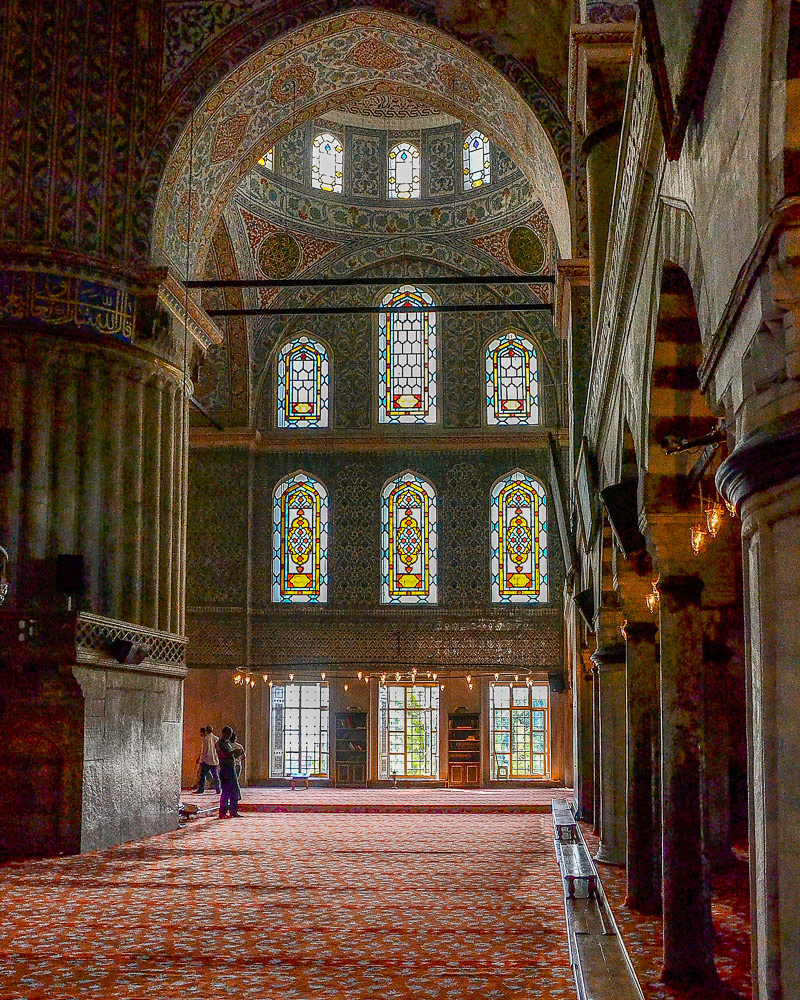
Hand-painted blue tiles adorn the mosque’s interior walls, hence its popular name.
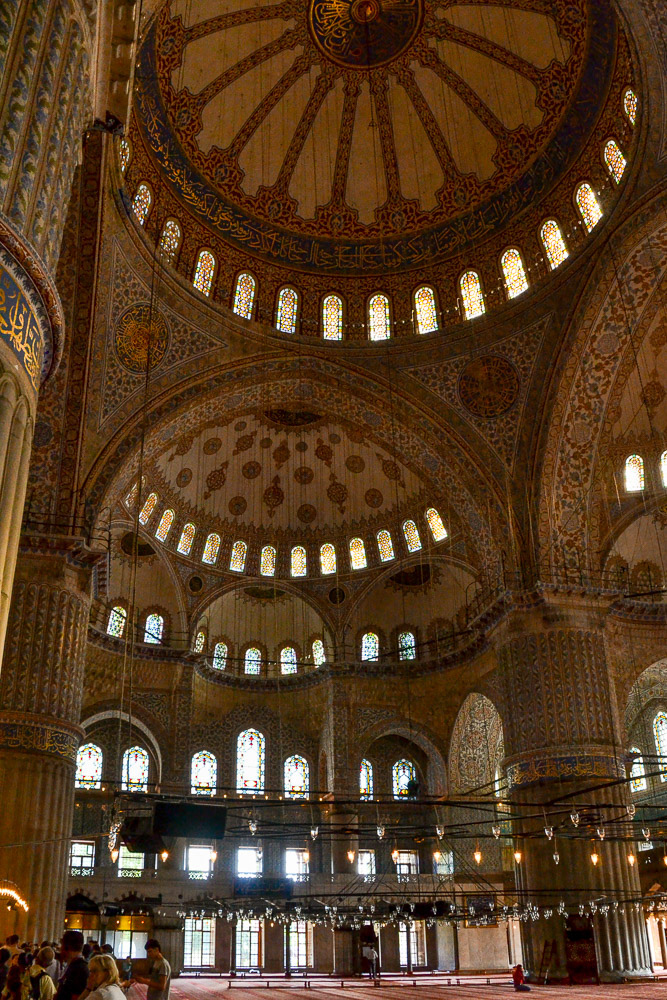
Looking up at one of the mosque’s five main domes, and eight secondary domes. Its vast interior is hard to capture in a single photo.
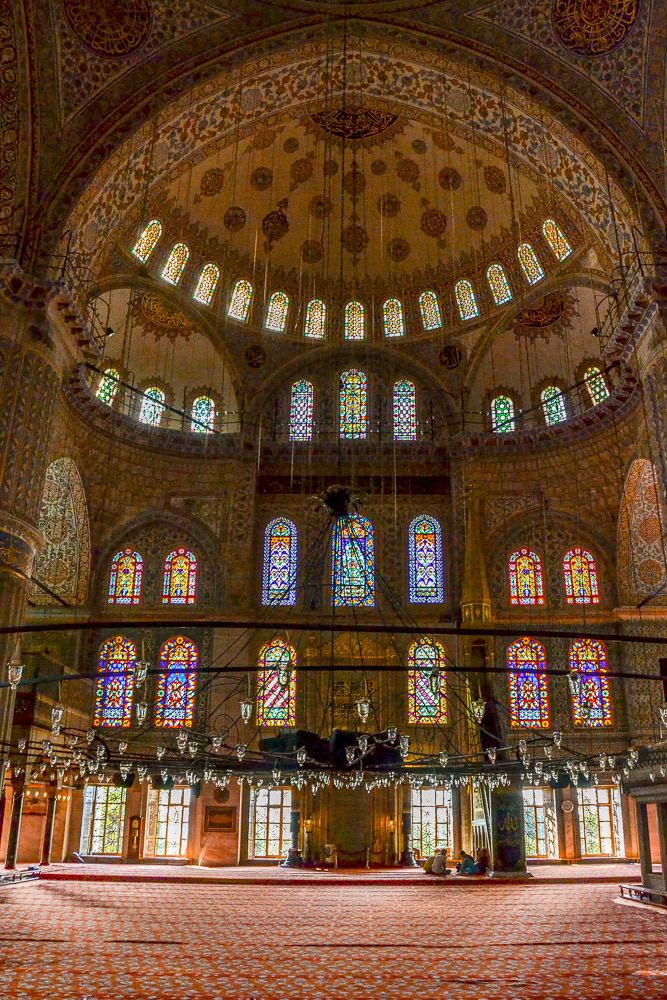
Sultan Ahmed Mosque continues to function as a mosque today; men still kneel in prayer on the mosque's lush red carpet after the call to prayer.
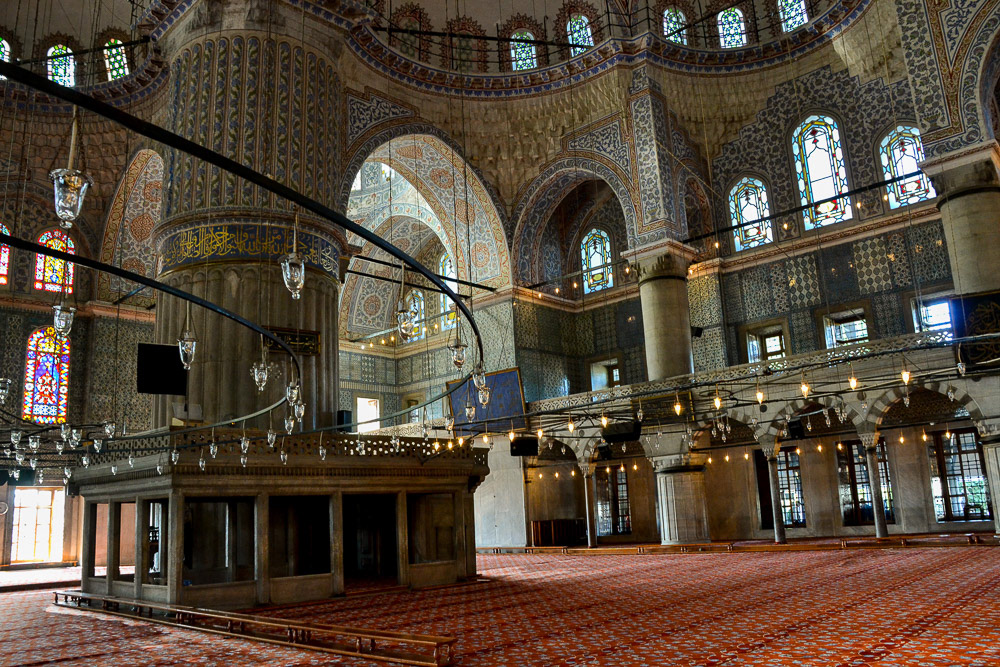
The vast interior of Sultan Ahmed Mosque is an awe inspiring sight as we tour this magnificent building.
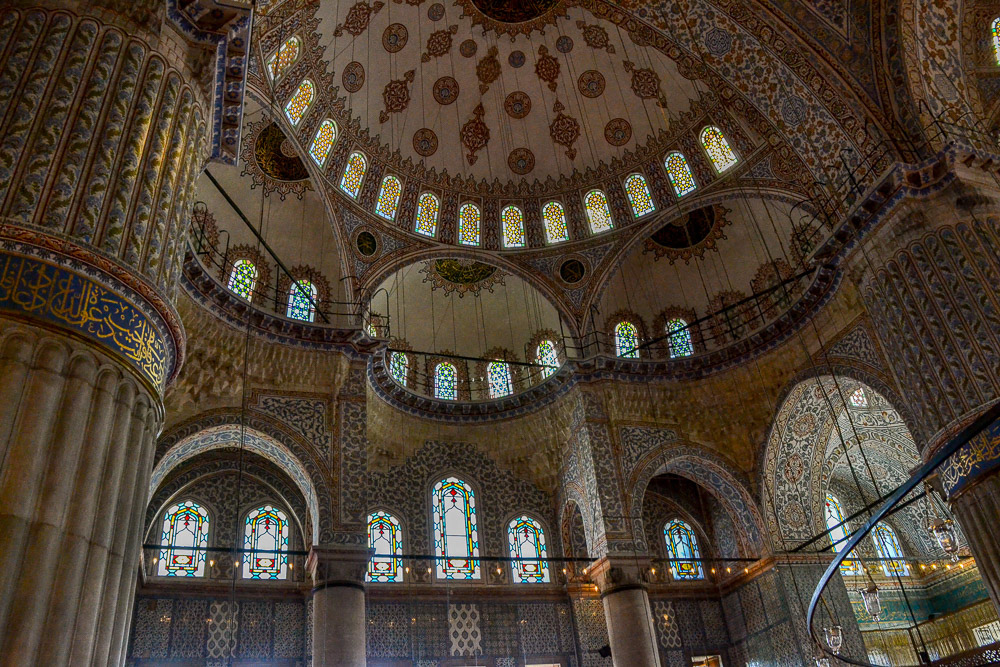
Another of the massive domes supported by secondary domes and giant columns.

Locals gather in prayer oblivious of tourists milling around.

Framed in the open gate as we leave the Blue Mosque is the famous Aya Sofya.

Hagia Sophia - Constructed 532 - 537 it was once a Greek Orthodox Christian basilica, later an imperial mosque, and is now a museum.
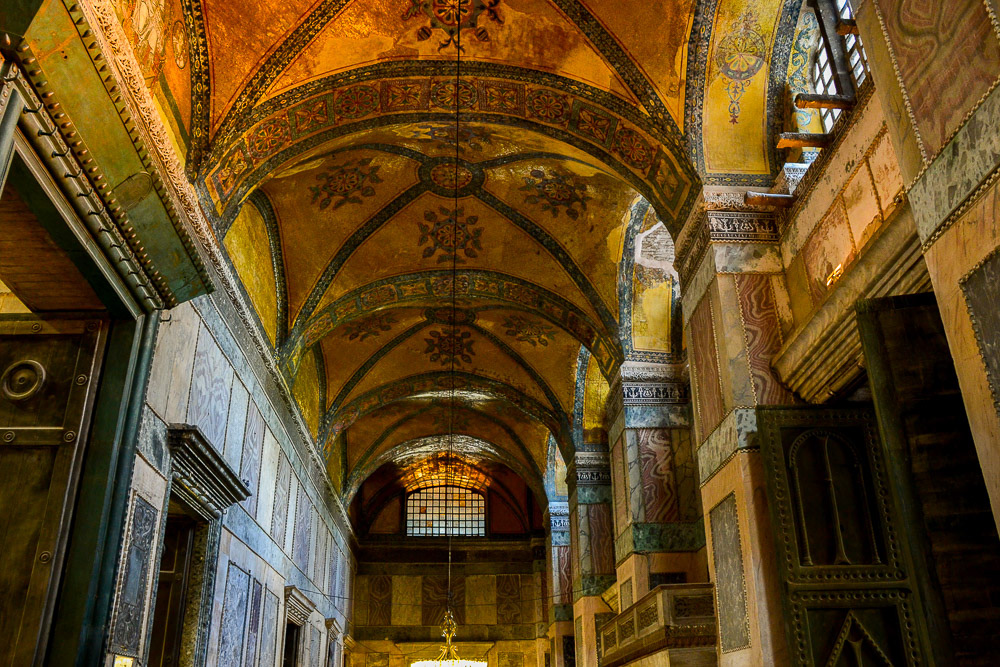
Spectacularly rich golden tones of the vaulted ceiling as you enter the mosque.
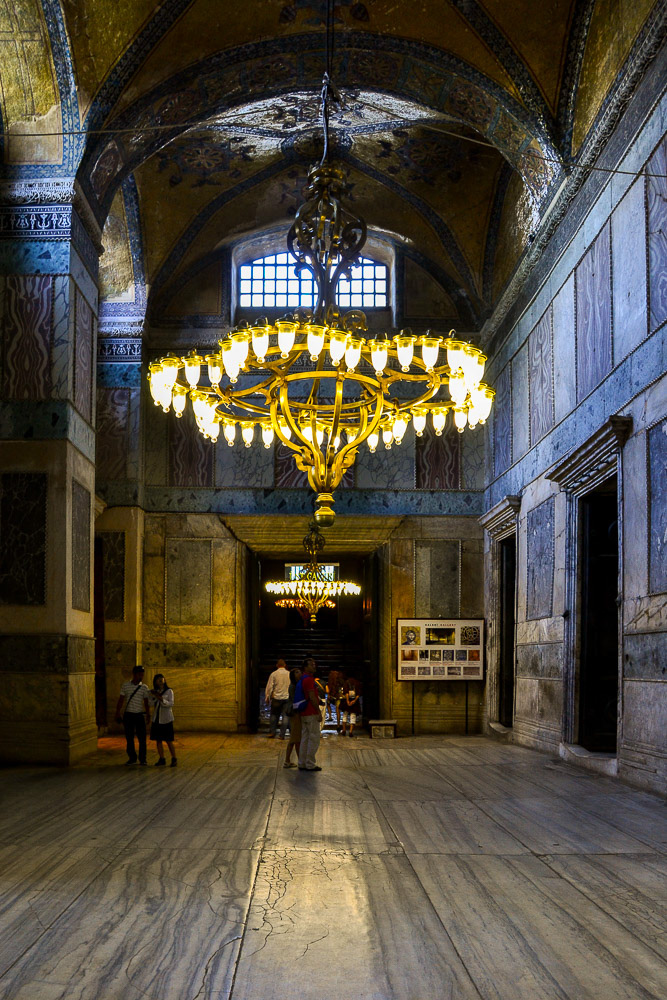
Impressive chandilers light the dark interior spaces.
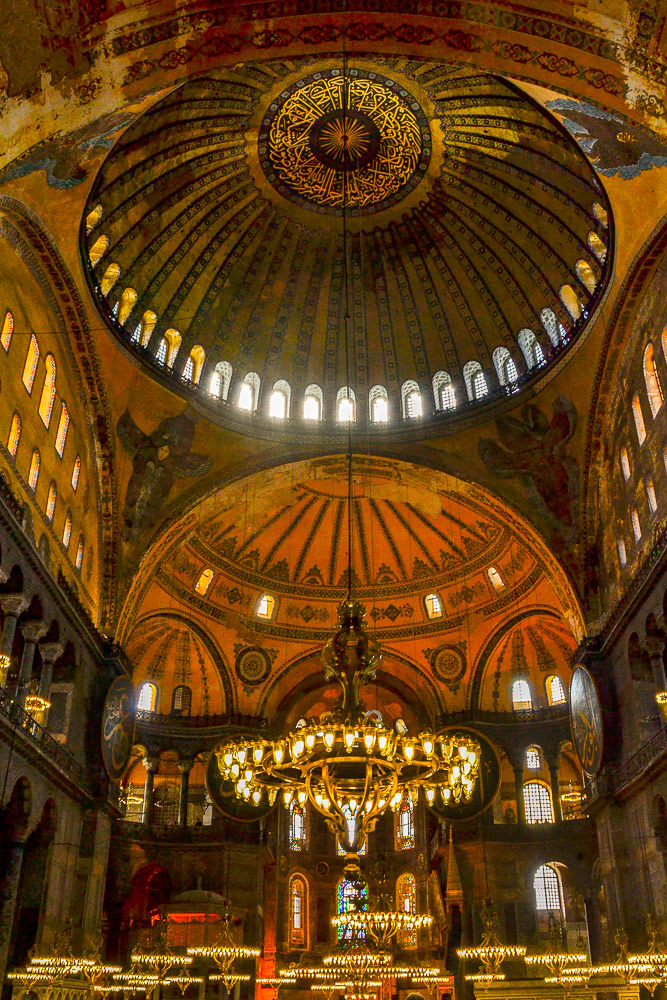
Layers of light and colour beneath the huge central dome.
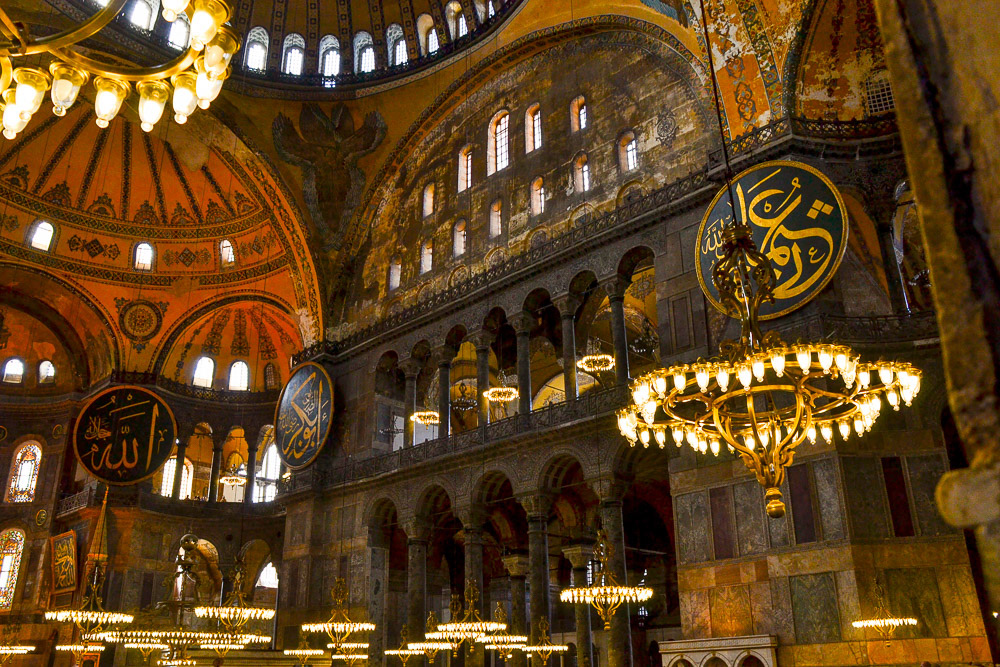
The vast interior of what was the world's largest cathedral for nearly a thousand years

A mix of Christian and Muslim iconography adorns the interior.
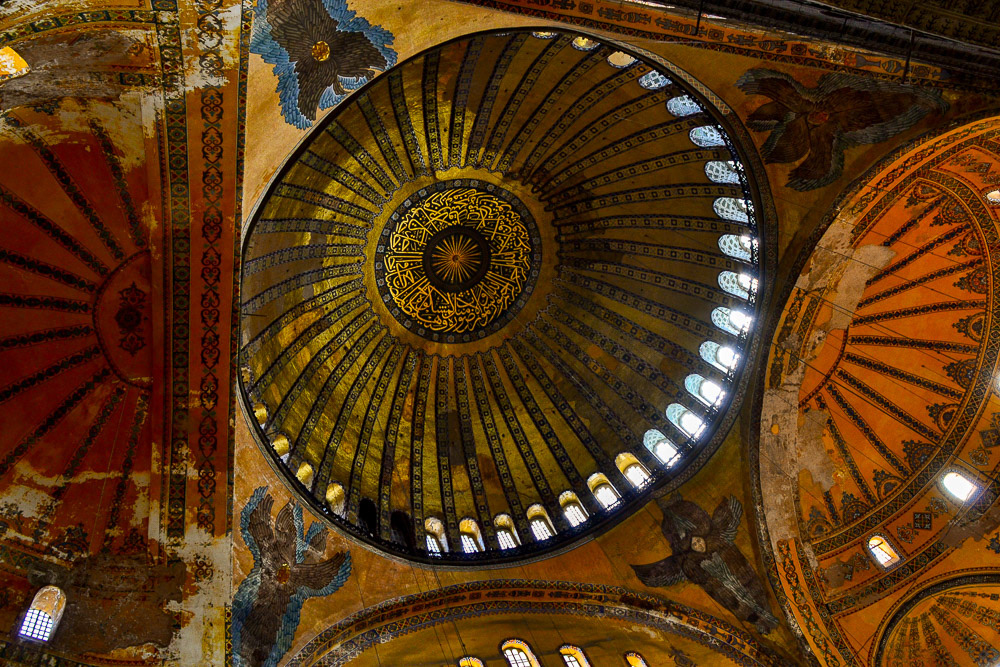
The central dome displays ornate decorations in gold.

Three wise men bearing gifts...

Many religious frescoes and iconography adorn the walls and ceilings.
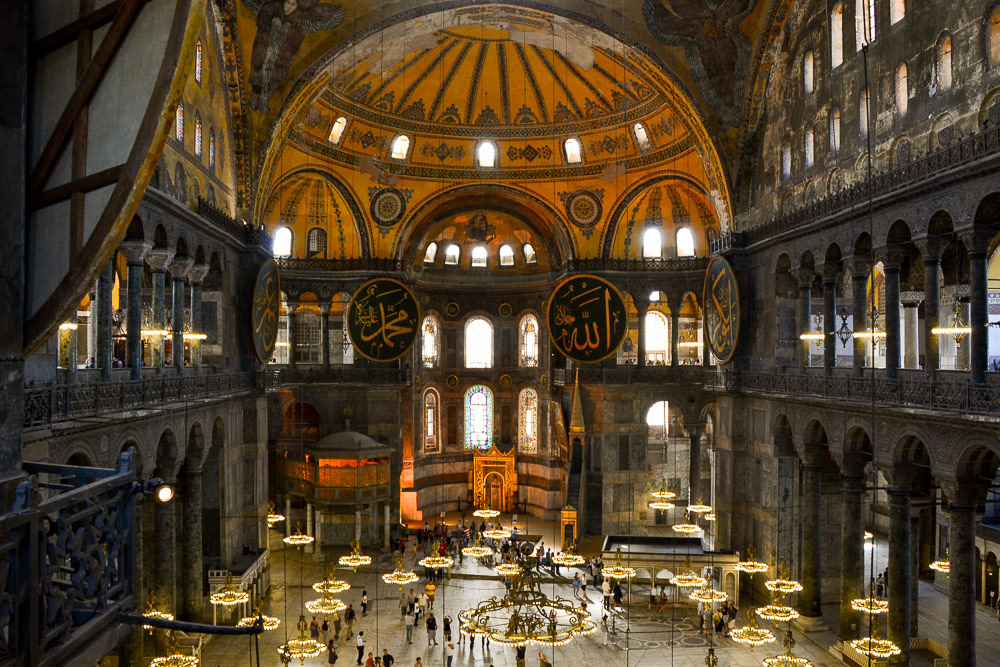
A view from an upper gallery over the floor level below.
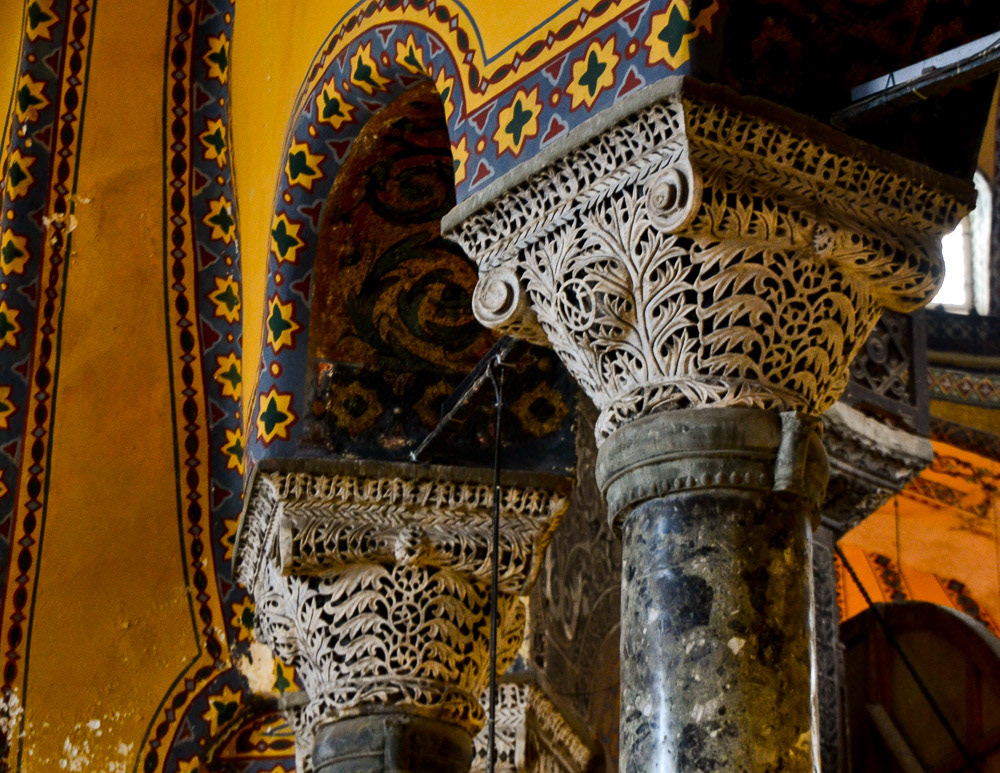
Elaborate capitals adorn black marble columns.

Topkapi Palace served as the main residence and administrative headquarters of the Ottoman sultans in the 15-16th centuries. - The Gate of Salutation, entrance to the second courtyard.

A roofed well in the grounds of the Topkapi Palace.
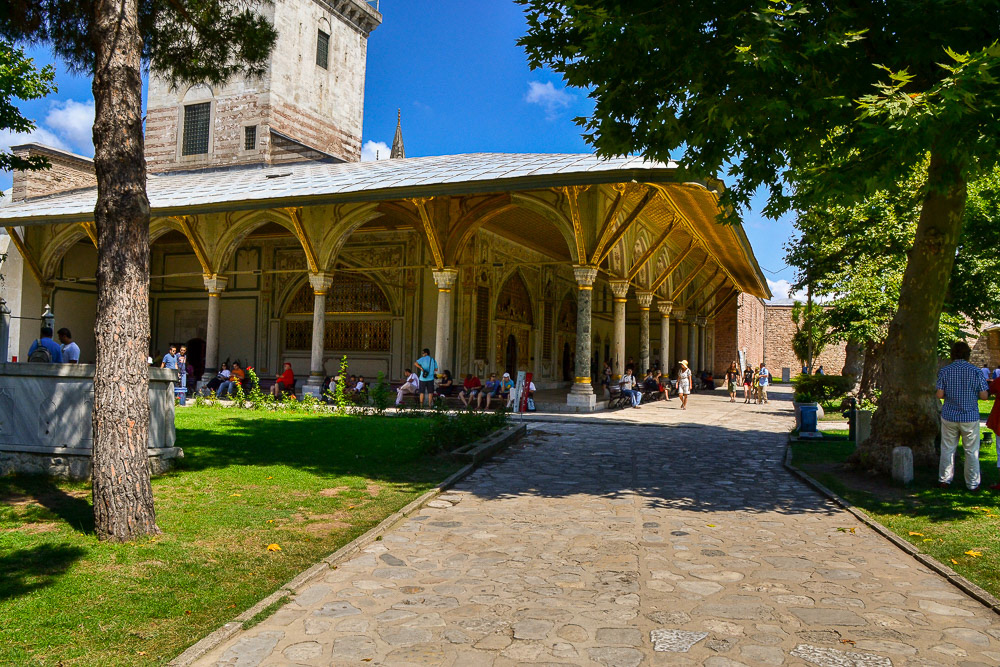
The Council Chamber with the Tower of Justice above.
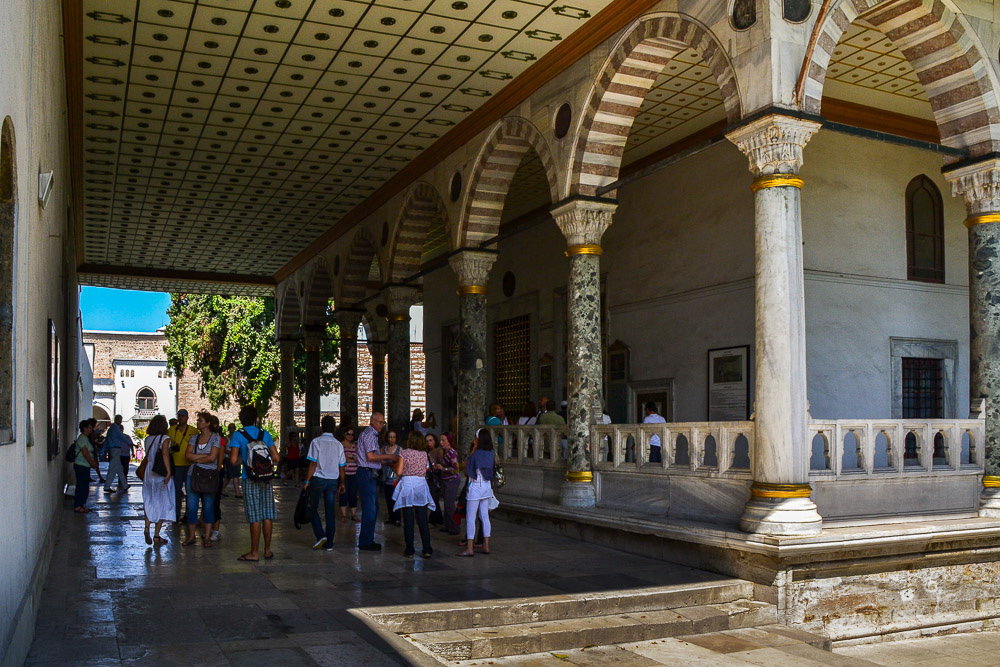
Arz Odası, the Audience Chambers.
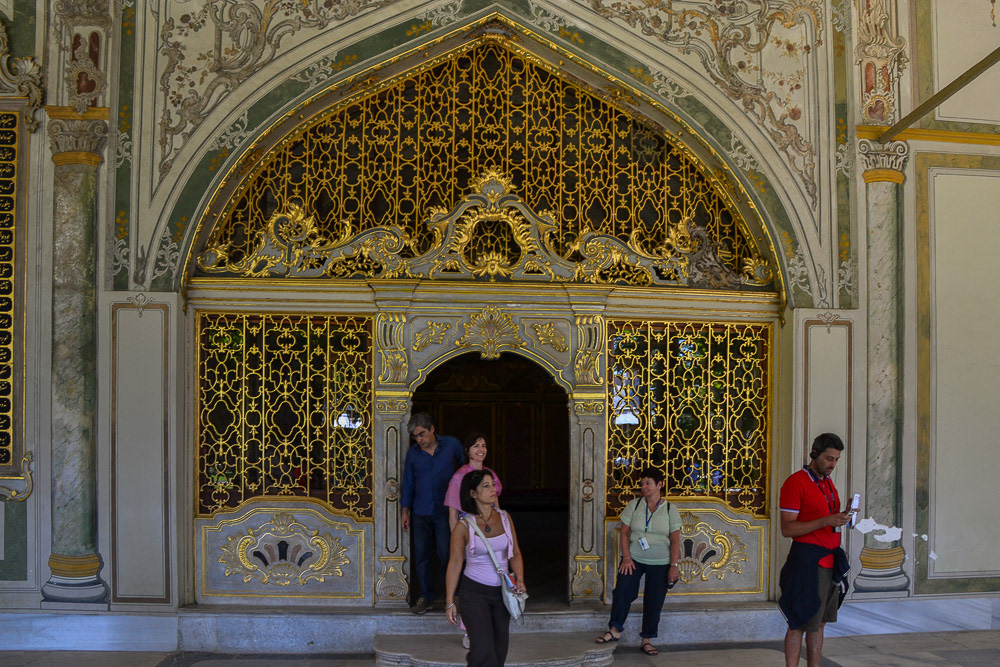
Entrance to the sultan's harem.
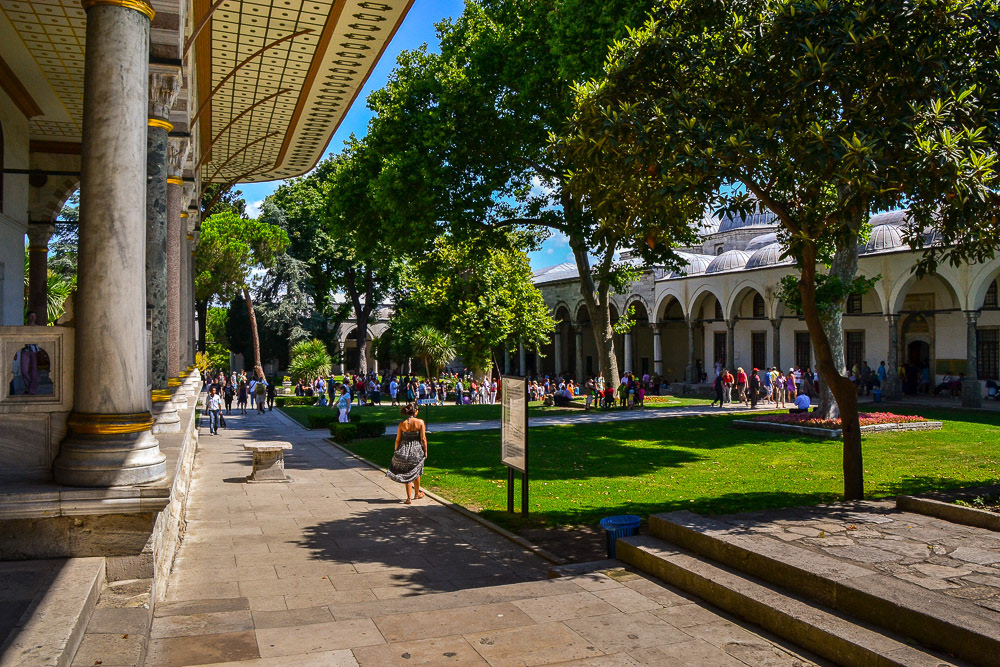
The Conqueror’s Pavilion on the right opens onto the Third Courtyard through a monumental arcade.

